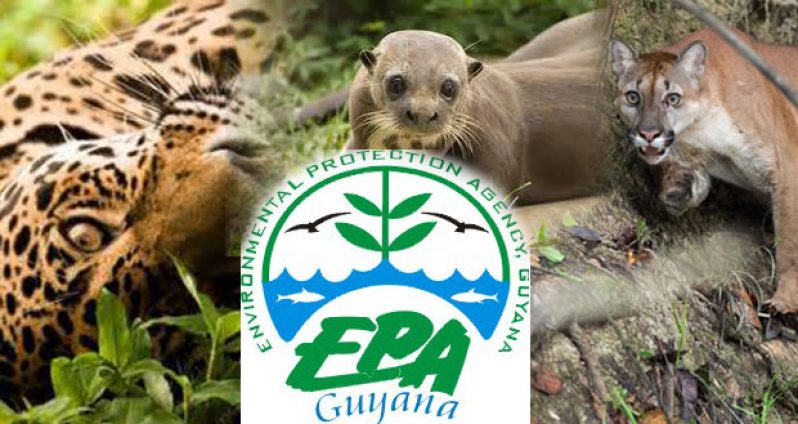Like many other countries there is an Agency in Guyana that deals with the protection of the environment. But what really does the EPA do to protect the environment? Before we address this question, it is interesting to let you know that the EPA was actually established 20 years ago on the 5th of June, 1996, World Environment Day. It was on this date, that the Environmental Protection Act (No 11 of 1996) was passed and it is this Act that called for an EPA to be set up.
In the first three years of the EPA being set up, there were just two Divisions with about twenty-five persons employed to conduct its work. However, over the years, the EPA has gradually grown and today there are FIVE Divisions and close to a hundred persons conducting the Agency’s work.
The Administrative Division, supports the work of the FOUR technical Divisions within the EPA, through provision of the materials, transportation, offices, salaries etc. Let’s take a brief look at what kinds of work is done by each technical Division:
Environmental Management and Permitting Division
This Division deals with the environmental authorisation of projects in our country. Persons who wish to operate a project needs to apply for environmental authorisation from the EPA. Some examples of projects that must apply include fish rearing, certain types of farming and livestock rearing, gas stations, sawmills, lumber yards, rice mills, etc. Depending on how large the project is, the EPA will determine how it may affect the environment and will issue an environmental authorisation that states what measures must be put in place for a project to operate. In fact, prior to issuing the authorisation the EPA, usually requires that a project indicates, in an environmental management plan the measures it will take to operate, so as to minimize its impact on the environment. If the EPA finds this plan satisfactory, only then will it issue an authorisation. To verify that the plan provided by the project is adequate, Officers of the EPA will conduct visits to the project site, research etc.
Environmental Management and Compliance (EMCD)
This Division responds to complaints or environmental issues that are causing harm to the environment or individuals. The response involves making site visits to assess the problem and to make recommendations to ensure proper environmental management procedures and standards are being followed. Also, the collecting of physical and biological samples from the environment are paramount.
You may be aware of the country-wide a ban being placed on the importation of Styrofoam. This is intended to move the country to a greener and more eco-friendly environs. Also Litter Regulations was enacted which allows for persons to be fined for littering and non-compliance. To date, many persons who would have been found guilty of littering have been charged and fined. This work is being carried out by the Litter Enforcement Unit under the EMCD.
Education, Information and Training
This Division deals with raising awareness of environmental issues, targeting groups, schools, organizations, governmental and non-governmental entities and the general public. This is done through outreach, presentations, workshops, media and information materials.
Biodiversity Management Division
This Division assists in the development of areas for conservation of nature which includes, ecosystems, and animals and plants, particularly those in the wild. The Division also issues Biodiversity Permits with specific conditions which allow researchers to conduct research and collects data to aid in the management of biodiversity. Persons wishing to conduct research must first apply for a Permit before they can proceed.
An important task of this Division is to advance the country’s pursuit of meeting its obligations under the United Nations Biodiversity Convention. As such, the Division implements projects that result in the preparation of National Biodiversity Policies, Strategies, and Action Plans as well as Biodiversity Regulations,
So this is the work of the EPA in a nutshell. We hope that it has piqued your interest to find out more about what we do.
“The Environment is everybody’s business”
You can share your ideas and questions by sending letters to: “Our Earth, Our Environment”, C/O EIT Division, Environmental Protection Agency, Ganges Street, Sophia, GEORGETOWN; or email us at eit.epaguyana@gmail.com.




.png)









